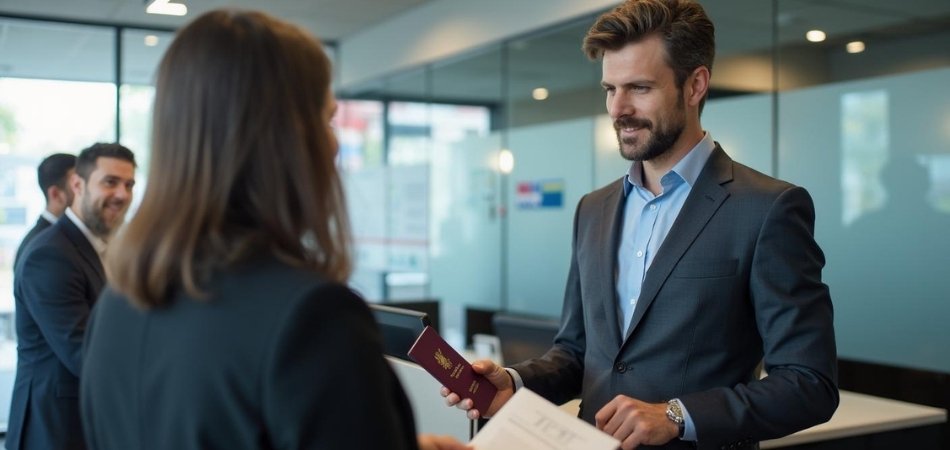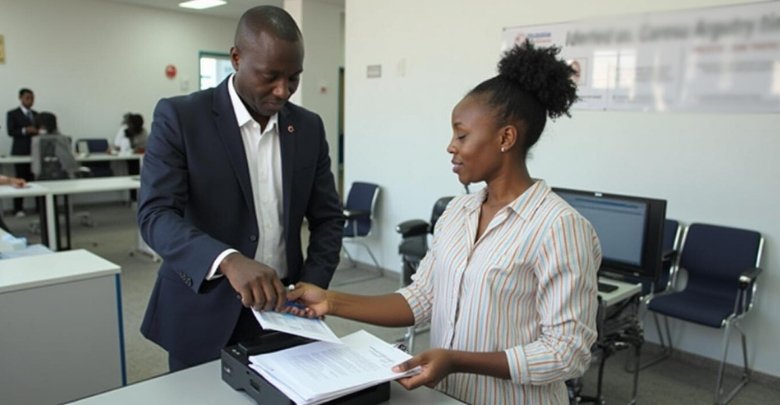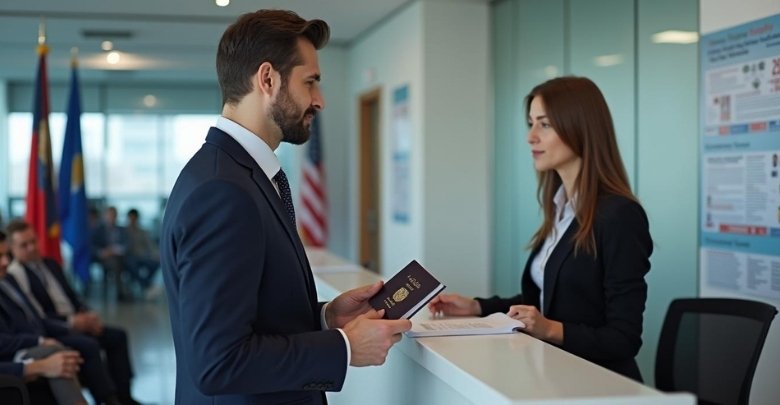Waiting for your USA visa approval can be nerve-wracking, especially when the process takes longer than expected. Many Nigerian applicants experience delays after completing their biometrics, leaving them anxious and unsure of what to do next. If you’re in this situation, it’s essential to understand the possible reasons behind the delay and how to handle it effectively.
If you’re wondering what to do if my USA visa got stuck after biometrics from Nigeria, the first step is to remain calm and track your application status. Delays often happen due to background checks, administrative processing, or high application volumes. While waiting, knowing the right steps to take can make the process smoother.
From checking your visa status to following up with the embassy, several actions can help you navigate the delay. Keep reading to learn the most effective ways to handle a stuck visa application and improve your chances of approval.
What to Do if My USA Visa Got Stuck After Biometrics From Nigeria?
Applying for a USA visa from Nigeria can be an anxious process, especially when delays occur after biometrics. Many applicants worry about what happens next and whether their application is still being processed. Knowing the reasons behind a delay and taking the right steps can ease your concerns. If your USA visa is taking longer than expected after biometrics, here’s what you need to do to stay informed and take the right action.
Understand That Processing Delays Are Common
Visa delays after biometrics are not unusual, and in most cases, they do not indicate a problem with your application. The US embassy processes thousands of visa applications, and factors such as background checks, administrative processing, or workload at the consulate can slow things down. Sometimes, applications take longer simply because they require additional review before a final decision is made.
Check Your Visa Application Status Online
Instead of guessing what’s happening, tracking your visa status through the CEAC (Consular Electronic Application Center) website can provide real-time updates. Use your DS-160 confirmation number or case number to check the current status of your application. If it shows “Administrative Processing,” it means further review is required, and you may need to wait a little longer.
Take Action When You’re Ready
It’s normal to feel anxious when your visa process takes longer than expected, but not every delay requires urgent intervention. Generally, visa decisions take a few weeks to a few months, depending on the type of visa and the complexity of your case. However, if your application has been in administrative processing for over 60 days, you may consider reaching out to the consulate for updates.
Contact the US Embassy or Consulate
If your visa has been stuck for an unusually long period, sending an email or calling the US embassy in Nigeria can help clarify the situation. Make sure to provide your full name, passport number, and case number in your inquiry to receive accurate information. Keep in mind that embassy staff cannot speed up your case, but they can offer insights into why your visa is delayed.
Review Your Application for Possible Issues
Mistakes in your application, missing documents, or inconsistencies in the information provided can lead to delays. Double-check your DS-160 form, supporting documents, and visa interview details to ensure accuracy. If any corrections are needed, follow the embassy’s guidelines on how to update your application. If you are traveling for an important event, such as a conference in USA, missing or incorrect documentation related to your invitation or sponsorship details may cause unnecessary delays.
Consider Seeking Legal or Expert Advice
If your visa has been delayed for an extended period or if you suspect your case requires special attention, consulting an immigration expert or lawyer may be beneficial. They can help assess whether additional documentation is needed or if an appeal should be filed in case of a visa denial. Sometimes, professional guidance can help resolve issues faster.
Keep an Eye Out for Embassy Requests
In some cases, the US embassy may require more documents or information before making a final decision. Keep an eye on your email and phone messages for any official requests. Responding promptly to such inquiries can prevent unnecessary delays and keep your visa process moving forward.
Prepare for Different Outcomes
While most delays result in visa approval, there is a possibility that your application might be refused. If your visa is denied, understanding the reasons behind it will help you determine your next steps. Some applicants can reapply immediately, while others may need to address specific issues before submitting a new application.
Waiting for your USA visa after biometrics can be frustrating, but patience and the right steps can make a difference. Stay informed, take action when necessary, and be prepared for all possible outcomes.
Why Some USA Visa Applications Get Stuck After Biometrics?
Waiting for a visa decision after completing biometrics can be frustrating, especially when there is no update for weeks. Many applicants start to worry, wondering if something went wrong in the process. Understanding the possible reasons for delays can help you stay informed and take necessary action when needed.
Background Checks and Security Clearance
Every visa applicant undergoes a background check, but some cases take longer than others. If your name matches a record in security databases or if additional screening is required, processing time may be extended. This is especially true for applicants with past visa refusals, travel history to restricted countries, or unclear background details.
Administrative Processing by the Embassy
In certain situations, visa applications require further review before a decision is made. This is known as administrative processing, where consular officers assess additional details, verify documents, or conduct extra checks. If your application is placed in this category, expect a delay that can range from a few weeks to several months.
High Volume of Visa Applications
A surge in visa applications, particularly during peak travel seasons, can slow down processing times. Embassies receive thousands of applications, and consular officers may take longer to review each case thoroughly. Unfortunately, this type of delay is beyond an applicant’s control, but patience is key.
Missing or Incomplete Documentation
Failure to provide all required documents or submitting incomplete information can result in processing delays. If officials find discrepancies in your application, they may request additional paperwork, which prolongs the process. Some documentation issues can even lead to visa denials, as missing information is one of the common reasons for US visa rejection, making it crucial to double-check all submitted forms.
Past Immigration Violations or Overstay Issues
If an applicant has previously violated US immigration laws, overstayed a visa, or was deported, the application may require extra scrutiny. These cases often undergo additional security checks, making the process longer. In such situations, a well-documented explanation may be necessary for approval.
Visa delays after biometrics can happen for various reasons, but staying informed will help you manage the wait. If your application is stuck, tracking your status and following up with the embassy can provide clarity on the next steps.
Can a Delayed USA Visa After Biometrics Lead to Rejection?
Waiting for a visa decision after completing biometrics can be nerve-wracking, especially when there is no update for weeks or even months. Many applicants worry that a long wait means a higher chance of rejection. However, delays do not always indicate a negative outcome, as various factors can affect processing times.
Administrative Processing
In some cases, visa applications are placed under administrative processing, which means additional security or background checks are required. This does not automatically lead to rejection, but it can significantly extend the waiting period. Applicants flagged for further review should remain patient, as the process can take anywhere from a few weeks to several months.
Additional Document Requests
If the consulate requires more information or supporting documents, they may put the application on hold until the applicant submits the necessary paperwork. This can cause delays, but it does not necessarily mean the visa will be denied. However, failing to provide the requested documents on time increases the possibility of visa rejection after biometrics, as missing paperwork can raise concerns about an applicant’s eligibility.
Background Checks
Certain applications require extensive background checks, especially if an applicant has a history of visa refusals, past immigration violations, or travel to countries with strict US security policies. While these checks take longer, they do not always result in rejection. Each case is evaluated individually, and approval is still possible if all requirements are met.
A High Volume of Applications
Sometimes, delays occur simply because of the high number of visa applications being processed at the embassy. During peak travel seasons or times of increased demand, consular officers may take longer to review cases. In these instances, the delay has nothing to do with an applicant’s eligibility or chances of approval.
A delay in visa processing after biometrics does not automatically mean rejection. Various factors can cause processing times to extend beyond the usual timeframe. Staying patient, tracking application status, and responding promptly to embassy requests can improve the chances of a successful outcome.
How Long Should I Wait Before Taking Action on My USA Visa?
The waiting period after submitting a USA visa application can feel endless, especially when no updates appear. Many applicants wonder whether they should wait patiently or take action to follow up. Knowing when to step in can prevent unnecessary anxiety and help keep the process on track.
Understanding Standard Processing Times
Every visa category has an estimated processing time, which varies depending on the embassy, type of visa, and applicant’s background. On average, visitor and student visas take a few weeks, while work or immigrant visas may require months of processing. Checking the estimated timeline for your visa type before worrying about delays is always a smart first step.
Tracking Your Visa Application Online
Rather than guessing when to take action, tracking your application status through the CEAC (Consular Electronic Application Center) website can provide clarity. If the status remains “In Progress” or “Administrative Processing” for a long time, patience may still be necessary. However, if no update appears for over 60 days, reaching out to the embassy could be beneficial.
Consulate or Embassy Contacts
Embassy officials recommend waiting at least 30–60 days after the interview before making inquiries. If your visa has been in administrative processing beyond the usual timeline, sending an email or calling the consulate can help determine the reason for the delay. Providing your case number, passport details, and full name ensures a smoother follow-up process.
Taking Action for Urgent Travel Plans
In cases where the visa delay affects urgent travel, such as medical treatment, business commitments, or academic deadlines, applicants can request expedited processing under specific circumstances. A well-documented request with strong supporting evidence increases the chances of approval. Embassies usually provide guidelines on how to submit such requests.
While patience is necessary, knowing when to act is equally important. If your visa remains delayed beyond expected processing times, taking proactive steps can provide clarity. Following up professionally and through the right channels ensures a smoother experience.
How Can I Expedite My USA Visa if It’s Stuck After Biometrics?
Waiting for a visa decision can be stressful, especially when processing seems to take longer than expected. Many applicants wonder if there is a way to speed up the process and avoid unnecessary delays. Understanding the options for expediting a USA visa can help determine the best course of action.
Checking If Your Visa Qualifies for Expedited Processing
Not all visa applications are eligible for expedited processing, as the US embassy only grants this option under exceptional circumstances. Situations like urgent medical treatment, the death of a close relative, or unforeseen business obligations may qualify. Applicants must provide strong supporting evidence to justify the urgency of their request.
Submitting an Expedite Request to the Embassy
If a visa delay is causing major inconvenience, applicants can send a formal request for expedited processing to the US embassy or consulate handling their case. The request should include a clear explanation of the reason, along with any necessary documentation. Embassies carefully review these requests, so providing detailed and verifiable proof increases the chances of approval.
Following Up on an Existing Application
Sometimes, applications get delayed due to administrative processing or pending background checks. While these situations cannot always be expedited, tracking the case through the CEAC (Consular Electronic Application Center) website can provide clarity. If no update is available after 60 days, contacting the consulate for further information may be necessary.
Exploring Alternative Travel Plans
If a visa remains stuck despite attempts to expedite it, considering alternative solutions might be necessary. Rescheduling travel dates, exploring different visa categories, or applying from another location could be options depending on the urgency. Flexibility and preparedness can help reduce the impact of unexpected delays.
Expediting a USA visa is possible in specific cases, but approval is not guaranteed. Understanding the eligibility criteria and providing strong justification are key factors in making a successful request. When delays persist, following up through the proper channels ensures a more informed and strategic approach.
Frequently Asked Questions
Visa processing delays can be frustrating, especially when there’s uncertainty about what comes next. Below are some additional questions applicants often ask about USA visa delays after biometrics, along with helpful answers to keep you informed.
Can I Travel to Another Country While Waiting for My Usa Visa Approval?
Yes, you can travel to another country while your USA visa application is still in process, as long as you meet the entry requirements of the country you plan to visit. However, keep in mind that your passport may be at the US embassy or consulate during processing. If international travel is necessary, contact the embassy to understand how it may impact your application.
Do Visa Delays After Biometrics Affect My Chances of Approval?
A delay in processing does not necessarily mean your visa will be denied. Many applications take longer due to background checks, administrative processing, or embassy workload. As long as you meet all requirements and provide accurate information, the delay should not impact the final decision.
What Happens If I Miss a Request for Additional Documents From the Embassy?
Failing to respond to an embassy request for additional documents can lead to visa denial or indefinite processing delays. If you suspect you missed a request, check your email and visa status online. If necessary, contact the embassy as soon as possible to clarify your next steps.
Does Having a Prior Visa Refusal Affect My Current Application?
A previous visa refusal does not automatically mean your new application will be rejected, but it can influence the decision. Consular officers will review the reasons for past refusals and compare them with your new application. If the issues that led to the refusal are unresolved, it may impact your chances of approval.
Can I Change My Visa Category If My Current Application Is Stuck?
Switching visa categories in the middle of processing is not possible. If you wish to apply under a different category, you must withdraw the current application and start a new one. This means submitting a new DS-160 form, scheduling another interview, and paying a fresh visa fee.
Final Words
Dealing with a visa delay can be frustrating, especially when you’ve already completed biometrics and expected a quicker response. However, understanding the reasons behind the delay and taking the right steps can help you stay in control. Instead of worrying, focus on tracking your application, checking for embassy requests, and knowing when to follow up.
If you’re still asking what to do if my USA visa got stuck after biometrics from Nigeria, remember that a delay doesn’t always mean rejection. Background checks, administrative processing, or embassy workload can extend processing times. Staying patient while ensuring your documents are complete will improve your chances of a positive outcome.
By staying proactive and informed, you can navigate this waiting period with confidence. If the delay persists, consider reaching out to the embassy for updates. Keep following the right steps, and your USA visa approval will be within reach.








